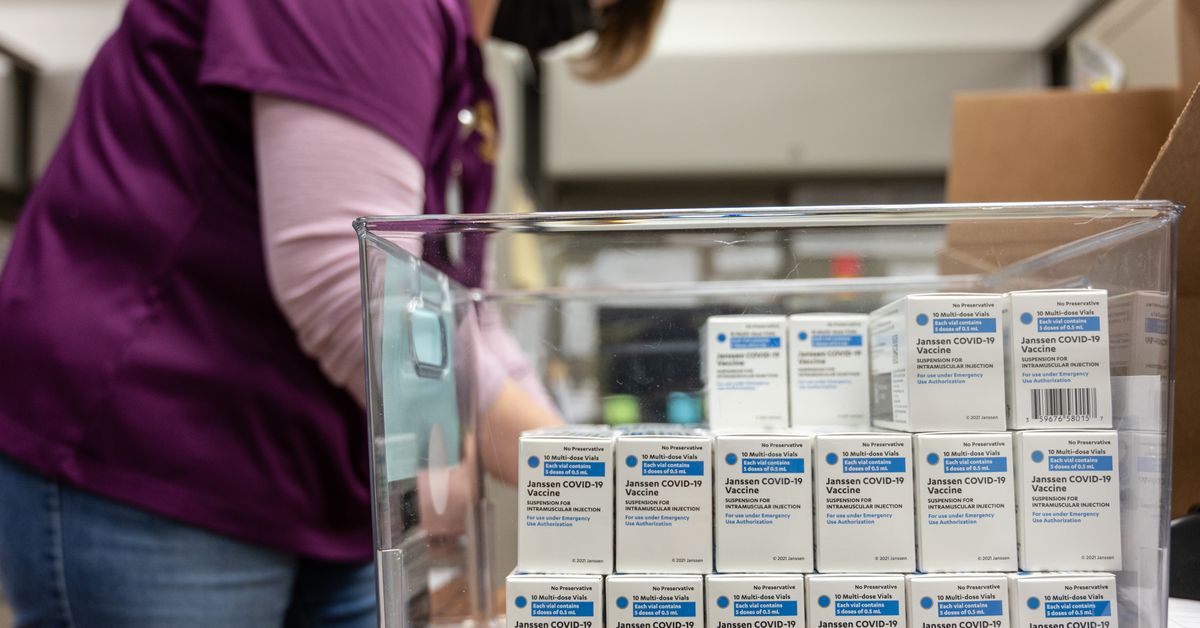
The US government is feeling optimistic about vaccines. By the end of May, it should have enough to vaccinate every adult in the country, President Joe Biden said on Tuesday.
Not only that, but Americans are feeling pretty good about the vaccine, too. About 69 percent of Americans had either already gotten the vaccine or were willing to get one when they could, according to a new survey from Pew Research Center.
That’s a huge relief to public health experts. Last year, they watched vaccine polling numbers drop dramatically during just four months. In September 2020, only half of people polled said they’d be willing to take a hypothetical vaccine. Not exactly surprising, given that, at the time, the Trump administration was promising to have vaccines in October, and people were worried that the approval process would be influenced by politics. Now that the vaccines are here — and real, and effective — more people want to get vaccinated.
The next big challenge will be actually getting that ample vaccine supply into those willing arms. And just because the government predicts it will have enough supplies secured by May 31st, that doesn’t mean that every adult in America will be vaccinated in the next 86 days.
“The vaccine race now is not a race out of the lab. It’s a race to the patient,” said Robin Townley, the head of special projects logistics for A.P. Moller-Maersk, in an interview with Science News from December. “It is the largest product launch in the history of humankind.”
The figurative “last mile” that separates a patient from their shot is going to be the most involved part of this entire process. Shipping larger amounts of vaccines from a factory to a distribution center is relatively straightforward, even with some of the vaccines needing to stay extremely cold.
“It is the largest product launch in the history of humankind.”
But then they have to get from large centers to pharmacies, nursing homes, mass-vaccination sites, and anywhere else that’s getting vaccines. That means having enough delivery vehicles on the road and enough freezer and refrigerator space cleared out. It means backup generators and detailed communication plans for the inevitable moment when something goes wrong. It means finding better ways to make vaccine appointments so that people can access vaccine supplies. Above all, it’s going to need a trained, fast workforce that’s able to transport the vaccine, store it, and administer it safely.
Poor planning and delays contributed to a slowed-down US rollout earlier this year, when local officials were mostly left to figure out distribution themselves. As mass-vaccination sites open, and supplies increase, some of those delays are starting to disappear. Back in December, the US had only vaccinated 2.8 million people, falling well short of its 20 million people goal. Now, more than 82 million people have been vaccinated, with about 2 million shots being administered every day, according to NPR.
Over the next few months, the things to watch will be not just the number of vaccines available, but also the number of vaccines administered. It’s still going to be a huge challenge, but there’s an end in sight. It might still be difficult to make travel plans and the summer could be up in the air — but if vaccinations go well, and if we can curb the spread of highly transmissible variants (big if), this fall could look a lot more like normal.
Here’s what else happened this week.
Research
Long COVID patients say they feel better after getting vaccinated
Some patients who have been suffering COVID symptoms for months are starting to report to their doctors that they are feeling better after getting vaccinated. Researchers want to gather more data to understand why. (Nicole Wetsman / The Verge)
Why Virus Variants Have Such Weird Names
The variant names for the coronavirus are nearly unpronounceable strings of numbers and letters. Here’s why. (Apoorva Mandivalli and Benjamin Mueller / The New York Times)
Development
How Johnson & Johnson’s COVID-19 vaccine could narrow equity gaps
Johnson & Johnson’s vaccine can be stored at refrigerated temperatures and only requires one dose. That makes it an attractive option for people wanting to increase vaccine equity in the US and around the world. Those vaccines are also proving to be popular at vaccination sites around the country. (Nicole Wetsman / The Verge)
Biden says Merck will help make Johnson & Johnson’s Covid vaccine
Earlier this week, pharmaceutical company Merck agreed to start manufacturing their rival’s vaccine in a bid to increase supplies later this year. (Berkeley Lovelace Jr / CNBC)
Perspectives
“You think Rip Van Winkle had a hard time…I wake up and there’s a pandemic. There’s fear in people’s eyes.”
— Lawrence Garbuz, the first patient in New York State to become seriously ill with COVID-19 on his experience waking up from a coma, as quoted in The Wall Street Journal.
“I started taking photos because I needed to. I was photographing the experience of parenting in the pandemic, and then I started doing these portraits. I wasn’t thinking about where they would go, but I just really needed to articulate something about what was happening. “
— Photographer Alice Proujansky on her “Born in a Pandemic” project. See her work on The Verge.
More than numbers
To the more than 115,913,859 people worldwide who have tested positive, may your road to recovery be smooth.
To the families and friends of the 2,576,079 people who have died worldwide — 522,221 of those in the US — your loved ones are not forgotten.
Stay safe, everyone.
